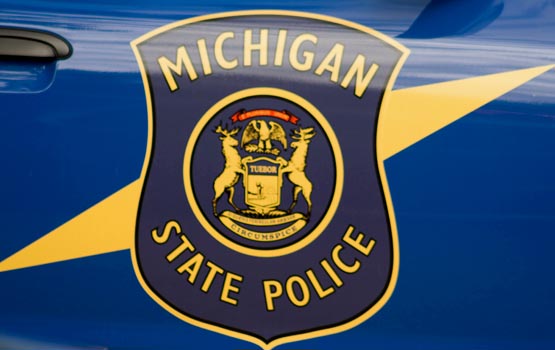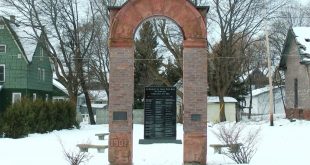
It will take a long time and a lot of money to get the area’s trail system back to the way it was before the June storm.
The Michigan departments of Environmental Quality and Natural Resources are working together to re-open trails before the upcoming snowmobile season.
The storm caused nearly $20 million damage to the state managed trail system with more than 150 washouts in Houghton County.
About 20 of the trail washouts have been repaired.
DNR staffers estimate there are at least 15 washouts considered “massive,” meaning they are more than 30 feet deep and will cost half a million dollars to fix.
Ten culverts have been repaired in the aftermath of the storm, but dozens remain damaged.
Crews are working to safely get trails open for ORV and snowmobile season but it’s likely that some trails will not open this winter.
Here is the full article from the Department of Natural Resources:
Showcasing the DNR: Coordinated effort aiding Houghton County storm recovery effort
By DOUG DONNELLY and JOHN PEPIN
The state’s coordinated ongoing rebuilding and restoration efforts are producing positive results in the wake of a 1,000-year flood that ravaged Houghton County in June.
This week, the U.S. Small Business Administration approved a request from Gov. Rick Snyder for a physical and economic disaster declaration for Houghton County, clearing the way for affected residents and businesses to apply for financial assistance, including low-interest loans.
“Getting our communities and businesses back on their feet is essential,” Snyder said. “The availability of these loans will bring some relief as they work to recover and rebuild.”
Previously, Gov. Snyder had declared a “state of disaster” for Houghton, Menominee and Gogebic counties, freeing up access to state resources. In early August, President Donald Trump declared a “major disaster” for the three counties, at the request of Lt. Gov. Brian Calley.
The Federal Emergency Management Administration agreed to provide public assistance but denied Calley’s request for individual assistance. Snyder appealed the decision, which was denied.
Damage
Meanwhile, the Michigan departments of Environmental Quality and Natural Resources continue to work together to remove threats to health, safety and welfare, while racing against the calendar to re-open trails before the upcoming snowmobile season.
Ron Yesney, DNR Upper Peninsula trails coordinator, said the damage to the trail network in the Copper Country was devastating.
“It’s by far the worst we have ever had,” Yesney said. “We have counted 158 washouts in our trail system alone – some small, some massive. Our focus now is identifying the places where we have washouts and remediating those that have health and safety implications. We’re moving forward in a positive way.”
The June 17 Father’s Day storm dumped 7 inches of rain on some parts of Houghton County over a nine-hour period. Damage to state-managed facilities in the area was assessed at just under $20 million.
Initially, the DNR was forced to close about 60 miles of state-managed recreation trails in Houghton County.
Teamwork
Since that time, crews have been working diligently on assessment and restoration efforts. An incident command center was set up and DNR response crews from across the state have been working 12-hour shifts, seven days a week to make area trails safe.
The DNR – including the Parks and Recreation, Fisheries and Forest Resources divisions – has worked with the DEQ on clean-up and restoration efforts. The Michigan Department of Technology, Management and Budget also has contributed staff.
“We’ve had people here continuously to help on the project,” Yesney said. “The response has been massive, and it’s been a tremendous sharing of resources, expertise and efforts.”
Steve Casey, Upper Peninsula district coordinator for the DEQ’s Water Resources Division, agreed. “We have worked long and hard this summer,” Casey said. “Together, we protected health and safety of Houghton County residents, and took steps to prevent transportation disruptions and additional property damage. It has been rewarding work.”
Slopes
The steep topography in and around the Houghton-Hancock area worked to enhance the damage produced by the rain and runoff during the June storm and an estimated 100-year storm that followed on July 12.
“Our focus now is to stabilize the slopes as much as possible and to prevent further erosion next spring,” Yesney said. “We want to get the trails improved to the point where we can use them, but health and safety comes first.”
Much of the trail damage occurred along old railroad grades that have been converted to recreational trails. They run across the face of the steep slopes. In many places, homes and businesses are situated below the grades.
Stabilizing damaged slopes will help ensure that when fall rains, or the spring thaw occurs, the resulting runoff doesn’t further deteriorate the trails and cause damage to communities.
Casey said 100-year-old storm sewers have deteriorated and are partially filled with sand and debris and no longer have their original hydraulic capacity to move water.
“Railroad grades typically had relatively small culverts that backed up high flows behind the grades during big storms,” Casey said. “This reduced peak flows that went to municipal storm sewers. Where the grades have washed out, peak flows in municipal sewers will increase.”
Casey said that until the materials that washed out from railroad grades are stabilized, they will continue to wash into the storm sewers and plug them.
“Municipalities (townships) have budgets as low as $200,000 a year,” he said. “They do not have the capacity to clean, let alone replace, their storm sewers.”
Response crews have re-opened culverts and pulled back highly unstable banks at washouts.
“The initial focus of these projects was life, health and safety. This was accomplished by preventing additional grade washouts above towns,” Casey said. “Now that we’ve been able to achieve that goal, or will shortly achieve that goal, we’re looking to prevent future property damage.
“This is done by stopping the erosion of sand and rock from washing into municipal storm sewers, so they don’t plug, flooding towns.”
Trails
About 20 of the trail washouts have been repaired. DNR staffers estimate there are at least 15 washouts considered “massive,” meaning they are more than 30 feet deep and will cost $550,000 or more to fix. Ten culverts have been repaired in the aftermath of the storm, but dozens remain damaged.
Trail closures remaining in effect include the Freda Grade Route, the Houghton to Chassell Trail and the Lake Linden Route south of Normand Road. The Hancock to Calumet Route is open with local reroutes. The Bill Nicholls Trail is open from Old Mill Road in Houghton to Greenland in Ontonagon County.
“Some trails will likely not be open this winter, although every effort is being made to safely get trails open for ORV and snowmobile season in the Copper Country,” Yesney said. “Restoration and bank stabilization work, as well as stabilizing damaged bridge sites, are among the other priorities.”
Doug Rich, western Upper Peninsula supervisor for the DNR’s Parks and Recreation Division, said staff hopes to create spurs off the Hancock to Calumet trail to Dollar Bay and Lake Linden in time for the snowmobile season.
“We’ve been making progress, day by day, moving forward to remedy the situation,” Rich said.
Reaction
Rich recently assumed the role of liaison officer within the Houghton County incident command team, helping to process FEMA funding applications and interacting cooperatively between the command team and officials from local communities.
Franklin Township Supervisor Mary Sears characterized the response as “absolutely amazing.” She said the DEQ has been “right on target” in its actions, with staffers “at their best” reacting to the disaster.
“They have stepped up and been a shining star through all of this,” Sears said. “You couldn’t ask for a better response from these guys.”
Schoolcraft Township Supervisor Joel Keranen agreed the response has been good, with DEQ and DNR staff staying put to help when they are undoubtedly needed elsewhere.
“We’ve come a long way in a short time,” Keranen said. “People have come to the area expecting a lot worse and I tell them, ‘Well, a lot of that has been stabilized now.’”
Boating
The DNR recently re-opened the Lily Pond boating access site, which had been damaged severely during the storm. DNR Parks and Recreation Division construction crews completed the work. Materials for the repairs cost $50,000, funded by Michigan boater registration and gas tax revenue from the DNR’s Waterways Fund.
The Boston Pond and Boot Jack boating access sites closed in the aftermath of the storm are now also open.
Boots on the ground
Elle Gulotty, a resource analyst with the DNR Fisheries Division’s habitat management unit, said from her perspective, the DNR and DEQ working together meant there were more staffers on the ground who know how streams function, understand infrastructure, care about other people and are prepared to help.
“It’s a special place. Neighbors were helping neighbors before we got there,” she said. “DNR and DEQ had tools and expertise that allowed us to tackle problems of greater magnitude and complexity.
“Working collaboratively, DNR and DEQ were able to protect health and safety as
circumstances on the ground rapidly changed.”
She said her experience as part of the response was very positive. “We were all on the same team,” Gulotty said. “There was a shared respect among DNR and DEQ staff, and for the folks we interacted with throughout the response.”
Gulotty said it meant a lot to her personally that people who had been through such hardship were looking out for the needs of others first.
“That’s how I strive to be, and I was so thankful to be working with such deserving and authentic people,” she said. “I admire their grit. They might not live next door to me, but these folks are my neighbors.”
Gulotty said when heavy equipment was running, it didn’t matter much to residents which agency was overseeing the work. The letters “DNR” or “DEQ” were less important than being there.
A shining moment
In the weeks following the initial storm, the DEQ entered into contracts for $1 million of work to protect life, health and safety and prevent future disruption of public transportation disruption and property damage.
Crews on these DEQ-funded projects were primarily made up of 75 percent DEQ staff and 25 percent DNR.
The highlight of this work was the removal of a 100-foot abandoned railroad grade that crossed a small creek above Ripley, a small unincorporated community in Franklin Township, situated along M-26, just east of Hancock.
After the Father’s Day flood, the embankment partially failed. “It was made with watermelon-sized rocks,” Casey said. “The stone arch culvert was broken and highly susceptible to plugging.”
If the culvert plugged, the embankment would wash out, sending thousands of tons of rocks down a very steep stream channel into Ripley. The ravine runs parallel to Michigan Tech’s Mont Ripley Ski Area.
One house was situated directly in line and certainly would have been hit by rocks. “Removing that embankment was the best thing we did,” Casey said.
Additional notable projects in the DEQ portfolio include pulling back banks and making a channel through debris on G Street in Lake Linden and 8th Street in Hubbell.
Looking ahead
With the number of days until winter arrives winding down quickly, DNR and DEQ staff members remain dedicated to making as much progress as possible on restoration efforts before the snow flies.
“Like the people of Houghton County, we’ve pulled together to respond to a disastrous set of circumstances presented by Mother Nature,” Rich said. “We’re all doing the best we can. It will take time, but we’ll get there.”
For the latest status updates on trails and other DNR facilities closures visit michigan.gov/dnrclosures.
Learn more about Michigan’s trails at michigan.gov/dnrtrails.
Check out previous Showcasing the DNR stories in our archive at michigan.gov/dnrstories To subscribe to upcoming Showcasing articles sign-up for free email delivery at michigan.gov/dnr.
 Keweenaw Report Your Source for Local News and Sports
Keweenaw Report Your Source for Local News and Sports





